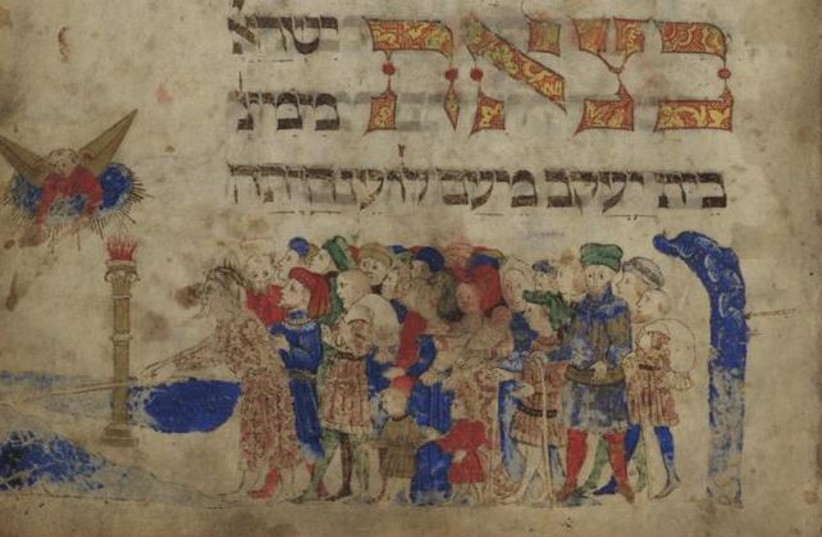The story of the Israelites' exodus from Egypt, a cornerstone of the Jewish faith, contains a number of large-scale miracles. The most dramatic of them might be the splitting of the Red Sea, allowing the Israelites to cross to safety while the Egyptian pursuers were engulfed by the waves.
Tradition regards the biblical account of the Red Sea split as an accurate retelling of events; however, archaeologists and scholars have attempted to explain it scientifically.
The Guardian reported in 2010 that researchers at the National Center for Atmospheric Research at the University of Colorado claimed to have used a computer model to simulate the wind and wave conditions that could have produced the emergence of land in the sea as described in the book of Exodus.
They concluded that the event must not have happened on an ocean; rather, the scene should be re-imagined at the Nile River delta. A strong easterly wind blowing at night could, according to researchers, have pushed back the water in a coastal region of northern Egypt long enough for the Israelites to cross the exposed mud flats before the water rose back up and drowned Pharaoh's forces.
"Our simulations correspond quite closely to what is described," said Carl Drews, lead author of the Colorado study, in a statement released at the time of the study's publication. "The separation of the water into two walls can be understood through fluid dynamics. The wind moves the water in a way compliant with the laws of physics, creating a safe passage with water on both sides. This also allows water to suddenly flow back in."
Drews, who spent years researching the biblical account of the parting of the Red Sea, drew on previous studies of the area's ancient geography to reconstruct the possible locations and various waterways in the Nile delta. His work, published in the journal PLOS ONE, is part of a larger research project on the effects of wind on water depth and the effect of Pacific typhoons on storm surges.
He ruled out the Red Sea as the location of the Israelites' crossing because it flows from north to south - which does not fit the biblical description of the Exodus in which an east wind sweeps the water to one side. He eventually concluded that steady winds of at least 100 km/h from the east over a (digitally recreated) lake along the Mediterranean Sea near today's Port Said could have swept the water back to western shores and created a safe crossing.
Alternative Red Sea scientific theories
Other researchers have previously tried to reconstruct the crossing of the Red Sea. Some have speculated that a tsunami could have caused a rapid retreat and advance of the waters, but that does not match the Bible's description.
Yet other theories were based on strong winds temporarily lowering the water level in a specific location. Russian scientists investigated the possibility that hurricane-force winds from the northwest could have exposed a small reef near the present-day Suez Canal that would have allowed the Israelites to cross. Others ruled this out, pointing out that the Israelites themselves would have also been blown about by the strong winds and, again, they would have to be coming from the east.

